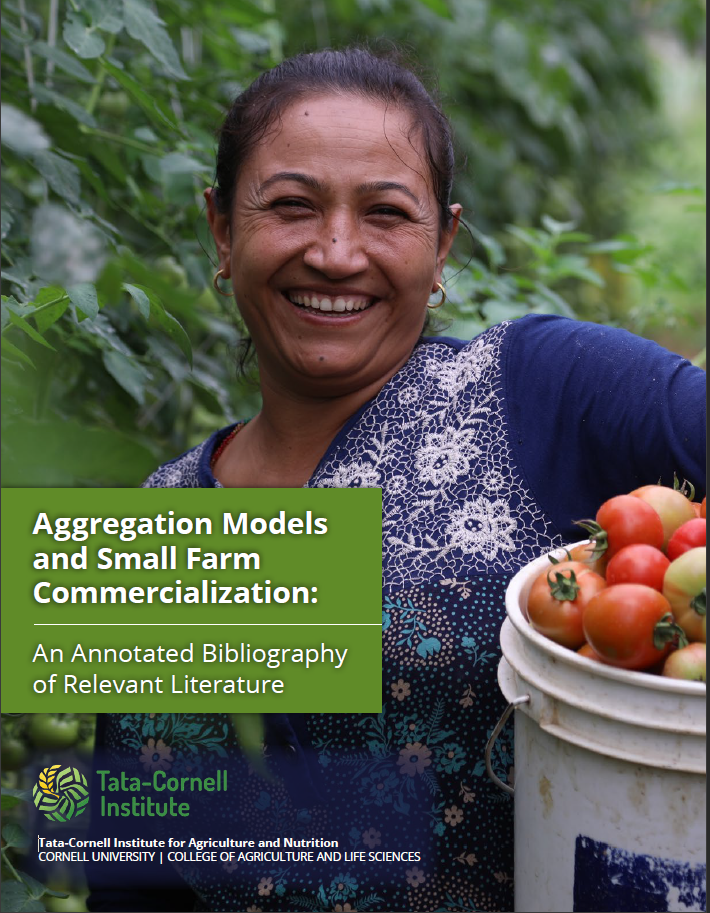Aggregation Models and Small Farm Commercialization: An Annotated Bibliography of Relevant Literature
 Smallholder aggregation models around the globe have the potential to contribute significantly to agricultural growth and productivity by facilitating improved access to credit, inputs, markets, and information. Aggregation models, including farmer producer organizations (FPOs) and cooperatives, are institutional arrangements by which small and marginal farmers, disadvantaged by low economies of scale, form formal and informal groups to jointly access factor and output markets. These arrangements can be bottom-up initiatives that emerge within the community of smallholder farmers or top-down initiatives initiated by the government or a promoting organization.
Smallholder aggregation models around the globe have the potential to contribute significantly to agricultural growth and productivity by facilitating improved access to credit, inputs, markets, and information. Aggregation models, including farmer producer organizations (FPOs) and cooperatives, are institutional arrangements by which small and marginal farmers, disadvantaged by low economies of scale, form formal and informal groups to jointly access factor and output markets. These arrangements can be bottom-up initiatives that emerge within the community of smallholder farmers or top-down initiatives initiated by the government or a promoting organization.
The Tata–Cornell Institute (TCI) published a scoping review of relevant literature in Food Policy in 2022, synthesizing studies of smallholder aggregation models and analyzing welfare gains, particularly those deriving from enabling commercialization. The review aimed to identify any research gaps in the existing literature, study the reemergence of farmer aggregation models, and contribute to the taxonomy of farmer aggregation models at the global level. The scoping review includes 244 studies, which span over 50 countries on five continents. Among the 244 studies, 87 studies were chosen for a more extensive analysis and included as annotated bibliographies. The TCI research team used annotated bibliographies to dive deeper into the existing literature and consolidate the relevant findings from each study. A total of 87 annotated bibliographies were included in the research.
The purpose of these annotated bibliographies was to identify research of high relevance in studying aggregation models, consolidate and highlight the main issues and relevant findings from each study, and take stock of the existing evidence of aggregation models enabling commercialization. For each paper, the annotated bibliography summarizes the authors’ information, the research and its setting, the research question, methods utilized for carrying out the research, main findings, and the study’s strengths and weaknesses. The annotated bibliography is descriptive and critical, outlining the authors’ viewpoints and their relevance to the literature.

